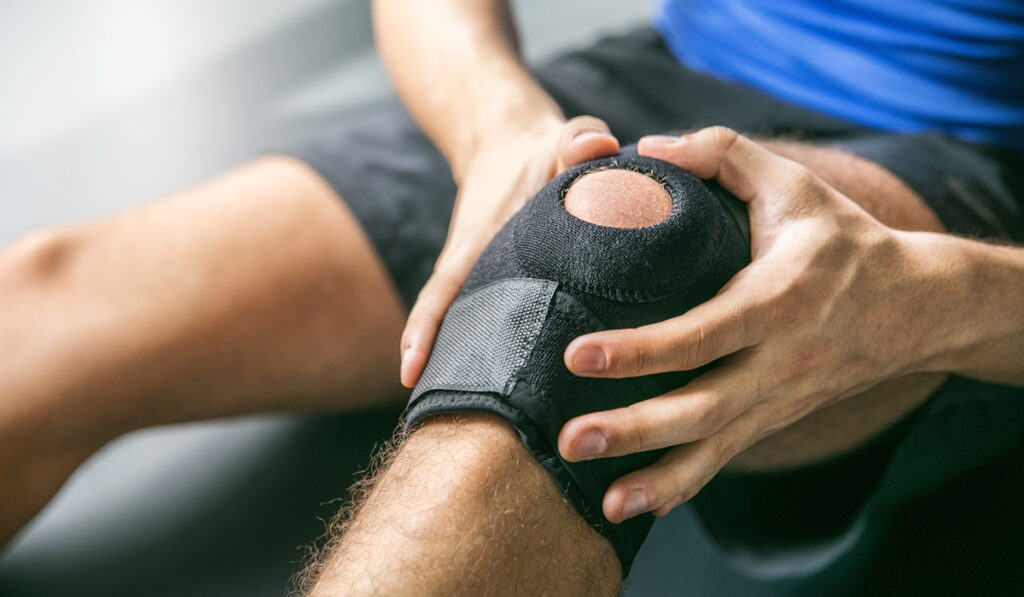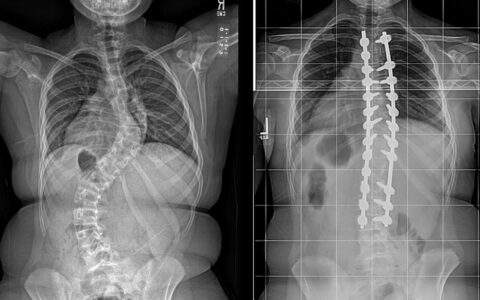The patellar tendon graft is the gold standard for anterior cruciate ligament (ACL) reconstruction, a procedure that enables about 87 percent of injured athletes to return to their sport.
But re-tears or further surgeries in the ACL can mean the end of an athlete’s career, as risks for arthritis and persistent dysfunction and pain rise with each subsequent knee injury.
Vanderbilt University Medical Center is one of six centers conducting the large-scale Bridge-Enhanced ACL Restoration (BEAR) trials comparing outcomes of ACL injury patients receiving traditional ligament reconstruction with a tendon graft against those undergoing a bridge implant in a newer procedure known as the BEAR technique.
Orthopaedic surgeon Charles Cox, M.D., performs 100 to 125 ACL surgeries a year and plays a key role in evaluating potential repair options.
“In this novel BEAR technique, the surgeon implants a sheep-derived, sponge-like tissue scaffold, infused with the patient’s blood, between the torn ends of the ACL to enable ligament healing. Importantly, it preserves the opportunity for a primary reconstruction in the case of a re-tear,” Cox said.
“This may change the standard treatment of ACL injuries throughout the country.”
BEAR I and BEAR II trials have proven that this bridge technique is comparable to traditional hamstring tendon autografts in young adult patients. Vanderbilt is one of several sites expanding this research through the Multicenter Orthopaedic Outcomes Network. Known as the BEAR MOON trial, this randomized controlled study involves adults ages 18 to 55.
“If we can ultimately show that outcomes are the same or improved in adults when compared to traditional reconstruction options, this may change the standard treatment of ACL injuries throughout the country,” Cox said.
Suboptimal Solutions
The ACL performs the key role of resisting anterior tibial translation and rotational loads on the knee to allow for pivoting activity, Cox explained.
“In the event of a tear, the intra-articular location of the ligament does not allow a blood clot to form for natural healing.”
He added that primary tendon repair – sewing the torn ends together – evolved as a less-than-satisfactory solution and carries a high rate of failure.
In the 1990s, surgeons began grafting autograft or cadaver tissue between the bones to reconstruct the torn ACL, in a procedure to replace the torn ligament. Most patients treated with this technique were able to return to sport or normal life activities.
“Vanderbilt has been at the center of ACL reconstruction research,” Cox said.
Research over the past few years has swung away from reconstruction grafts and back toward primary ligament repair options, but now using an internal stenting/bracing technology to hold the repaired ACL pieces together without a graft.
“This doesn’t solve the fundamental problem that the ACL doesn’t mend without a blood supply and clotting,” he said.
Bridge to Healing
The work of pediatric orthopedic surgeon Martha Murray, M.D., of Boston Children’s Hospital, led to the birth of the BEAR procedure. She developed the concept of a blood-infused spongy xenograft implant to surround the torn fibers, bridging the gap and kickstarting self-healing.
“We take the patient’s blood, douse the ‘sponge’ with it, and use sutures to secure it into the inner knee,” Cox said. “The torn ACL ends can therefore heal without the morbidity of harvesting a graft, or the cost and risks associated with use of a cadaver specimen.”
In young and active patients, outcomes of the BEAR and hamstring graft procedures were generally equivalent, though BEAR patients recovered hamstring muscle strength more quickly. These results were key to the FDA’s clearance to begin marketing the BEAR implant in December 2020.
Breaking the Tie
Cox says the BEAR technique has several potential benefits, perhaps the most significant is the ability to forestall a primary ACL reconstruction.
“Patients don’t do as well after a second reconstruction,” Cox said. “With the BEAR procedure, if revision surgery is needed, you still have good options.”
The long game is lowering the risk of arthritis and knee replacement over the course of a lifetime.
“If your knee continues to be unstable after surgery, you’re more likely to tear your meniscus structures, and if you do that, the cartilage must bear more force, raising your risk of arthritis.”
The BEAR MOON study underway is following patients now approaching their 20-year anniversary of reconstruction surgery. It aims to see who develops arthritis and who does not.
“The outcomes of these studies could have enormous implications for how we treat both young people and adults with ACL injuries,” Cox said.





